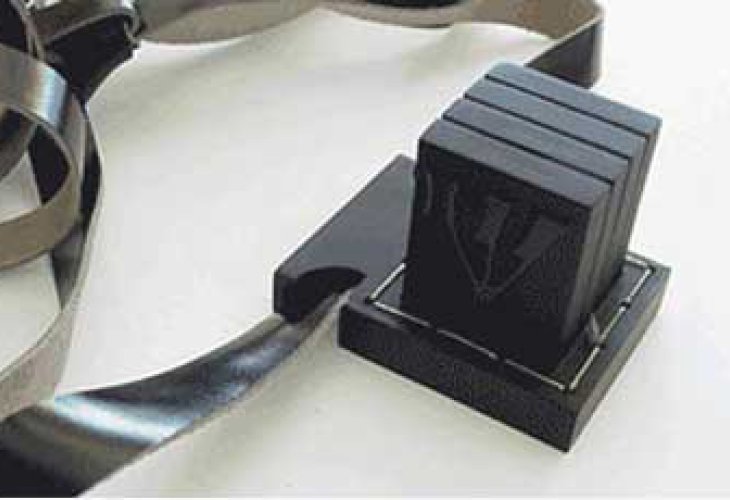Facts in Judaism
Unwrapping Tefillin: Some Surprising Facts Behind the Straps
Discover the significance and hidden meaning behind one of Judaism's most important mitzvot (commandments)
- Hidabroot
- |Updated

Tefillin: A Sign of the Covenant
“And you shall bind them as a sign upon your arm, and they shall be as totafot (frontlets) between your eyes” (Devarim 6:8).
Tefillin is one of the most significant mitzvot (commandments), serving as a symbol of the bond between the Jewish people and Hashem. Made from the leather of a kosher animal, tefillin consist of two black leather boxes - batim - one that is worn on the arm (tefillin shel yad) and one on the head (tefillin shel rosh). Each box holds parchment scrolls containing four Torah passages.
Rashi and Rabbenu Tam differ as to the correct order of these Torah passages. Consequently, there are two types available, and some devout individuals wear both daily - first they don tefillin written in accordance with Rashi's position, and later they don tefillin written in accordance with Rabbeinu Tam's.
The mitzvah of tefillin is so essential that wearing tefillin is said to be equivalent to the entire Torah. Along with brit milah (circumcision) and Shabbat, tefillin are one of three signs that express the covenant we share with Hashem.
A person who has never worn tefillin (karkafta d’lo manach tefillin) is in a class of his own, in the most unfortunate sense of the term. The purpose of tefillin is to dedicate one’s mind and heart - intellect and emotion - to the service of Hashem. Accordingly, the tefillin are placed on the arm, opposite the heart, and on the head, over the mind.
Even the sequence in which tefillin are donned reflects a foundational Jewish principle: "Na’aseh v’nishma" - doing precedes understanding. The tefillin shel yad that symbolize action, are donned before the tefillin shel rosh, which represent comprehension.
Tefillin are also seen as spiritually protective. The verse “And all the peoples of the earth shall see that the name of the Lord is called upon you, and they shall fear you” is interpreted by the Sages as referring to the tefillin worn on the head. During times of conflict, such as the War of Attrition, the Lubavitcher Rebbe emphasized the importance of encouraging tefillin observance among Israeli soldiers.
Every Single Day
For this reason, it is very important for every Jewish man from the age of bar mitzvah to wear tefillin every weekday. Ideally, the morning prayers should be recited with tefillin, but this mitzvah stands on its own, and one can put on tefillin, recite Shema, and then remove them.
Checking and Maintenance
Since tefillin can become invalid over time - especially lower-cost ones - it is crucial to have them checked regularly by a certified and God-fearing sofer stam (scribe). Even minor damage to the boxes or scrolls can render the tefillin invalid. It's customary to check tefillin annually and, at minimum, twice every seven years.
How to Wear Tefillin
Tefillin are worn on the left arm (unless one is left-handed, in which case tefillin are worn on the right arm) and on the head above the forehead. The tefillin shel yad should rest on the bicep, tilted toward the heart. The tefillin shel rosh must be centered, not leaning to either side, and should not sit below the natural hairline.
There are different customs for wrapping the strap of the tefillin shel yad, but all involve wrapping them around the upper arm, forearm (seven times), middle finger (three times), and tying it off on the palm. The tefillin shel rosh are placed in position after the initial wrap of the arm strap, but before finishing it.
Each of the two tefillin is a separate mitzvah unto itself. If someone cannot wear one due to injury or other constraints, they may still fulfill the mitzvah of wearing the other.
Halachic Details
Shape: The batim must be perfect squares; even slight deviations invalidate them.
Color: The straps must be black. Faded straps should be redyed by a qualified individual.
Time: Tefillin may be worn from daybreak (about 50 minutes before sunrise) until sunset.
Blessings
Before tightening the tefillin shel yad, recite: Baruch Atah Ado-nai Elo-heinu melech ha'olam, asher kid'shanu b'mitzvotav, v'tzivanu l'haniach tefillin.
(Blessed are You, Lord our God, King of the universe, who has sanctified us with His commandments and commanded us to put on tefillin.)
One should not speak between putting on the tefillin shell yad and the tefillin shel rosh. If one nevertheless interrupted and spoke before tightening the straps of the tefillin shel rosh, one should say a second blessing:
...asher kid'shanu b'mitzvotav, v'tzivanu al mitzvat tefillin.
(Blessed are You, Lord our God, King of the universe, who has sanctified us with His commandments and commanded us on the commandment of tefillin.)
Purchasing Tefillin
Due to widespread issues with invalid or poorly made tefillin, it is essential to purchase tefillin from a reputable source under the supervision of a known authority. One must verify the identity and reliability of the sofer or proofreader.
It is important to understand the difference between klaf (regular uncoated parchment) and klaf meshuch (coated parchment). Though klaf meshuch is halachically acceptable (and easier for the sofer stam to work with), it is less durable and more susceptible to moisture and weather damage. Tefillin made with this type of parchment tend to be cheaper and of lower quality. For long-term use and reliability, uncoated parchment is highly preferable, even if it's more expensive.
Regular Checks
Even high-quality tefillin can become invalid over time. According to halacha, they should be checked at least twice every seven years, though many people have the custom to do so annually, especially during the month of Elul, ahead of Rosh Hashanah.

